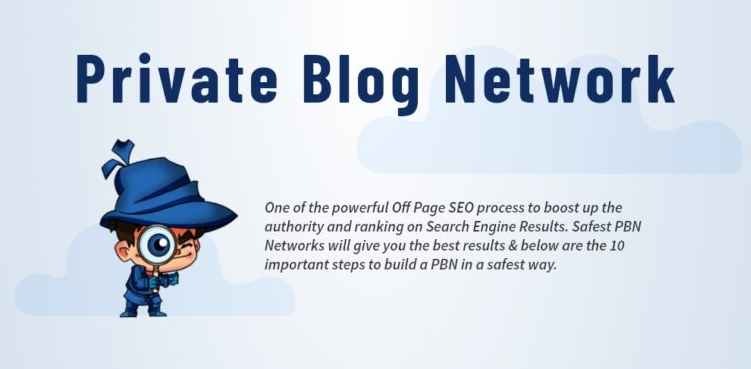All Categories
Featured
Table of Contents
- – Semantic Seo Checklist
- – Which Is The Leading Semantic Seo Guide Company
- – The Leading Semantic Seo Content Analysis Ser...
- – How Much Should I Pay For Nlp For Semantic Seo?
- – Which Is The Premier Nlp For Semantic Seo Co...
- – Whats The Most Popular Semantic Seo Insights...
- – Which Is The Leading Optimizing For Search I...
This is due to the fact that search engines have actually advanced and are relocating a lot more and more towards checking out web content on the internet. Of course, that has actually also changed the method we develop content, particularly if we desire to rate far better in the search engines.
, the leader of the Web, mentioned to stand for the idea that all points in deep space are deeply interconnected. Intertwingularity is not generally acknowledged, people keep claiming they can make points deeply ordered, categorizable and consecutive when they can't. Everything is deeply intertwingled. Based upon the connections in between search intentions, the online search engine chooses a content ready by computing the distance in between the vectors of definition.
It permits you to see, beginning with a subject, all the entities that are related to that subject. This way you can plainly see which entities/concepts/ideas have currently been covered on your internet site, and you can discover brand-new possibilities by understanding what web content you can include and how to develop it.
Semantic Seo Checklist
It has the ability to make your material easy to understand for internet search engine on the one hand and for your audience on the other. Structuring your material model highlights your material and its underlying connections to ensure that internet search engine can recognize you among hundreds of pieces of information, making you much more visible to users who fulfill the search intent relevant to your business.
In semantic search engine optimization copywriting, an editor begins with a wider variety of topics and customizes the material to include semantically relevant terms and phrases that aid viewers comprehend a subject, comparable to reviewing web content in a wiki. From a content creating viewpoint, one practical method to do this is to develop a vocabulary of terms and questions bordering your target subject.
Which Is The Leading Semantic Seo Guide Company
Find out more regarding by seeing the by!.

Semantic search refers to the procedure of how online search engine understand and match keyword phrases to a searcher's intent in organic search results page. Before semantic search, online search engine like Google operated like matchmakersaligning details words in your query with those precise words on websites. The results were uncomplicated but often lacked deepness.
The Leading Semantic Seo Content Analysis Service?
It enables Google to provide quick, precise answers to browse questions concerning real-world topics. When you kind an inquiry word right into Google, you're not just entering a series of words. You take advantage of an intricate internet of definitions and connections. Google's Knowledge Chart sees these words as entities with context and partnerships.
When you search for "Apple," Google does not just see a word that describes a fruit. It recognizes Apple as a business and can provide associated details. It was Google's answer to the rise of voice searches, where questions became extra conversational and nuanced.
How Much Should I Pay For Nlp For Semantic Seo?
By incorporating NLP, Hummingbird permitted Google to move beyond mere keyword matching. It helped the search engine comprehend search intent, boosting the odds that results would accurately match the factor behind a user's search. As the third essential ranking aspect after material and links, RankBrain has boosted Google's semantic search abilities to understand the definition of search inquiries.
RankBrain is an equipment discovering system that aids Google interpret queries it hasn't seen prior to. It can make guesses about words and expressions it does not recognize and filter results appropriately. Making it much more reliable at taking care of never-before-seen search queries. RankBrain takes into consideration even more than just keywords when evaluating a search query.
It brings results that match the keywords and line up with the overall intent of offering puppy training suggestions. And if the user regularly searches for dog-related content, Google may prioritize much more in-depth training guidesrecognizing the user's recurring rate of interest in the topic. Integrating modern technologies like the Knowledge Graph, Hummingbird, and RankBrain, semantic search helps the Google algorithm analyze and connect data across a vast web of info.
Which Is The Premier Nlp For Semantic Seo Company?
The emphasis changes from keyword option to an all natural strategy including individual intent, topical importance, and general user experience. Developing web content that attends to the searcher's requirements with extensive details can enhance your SERP positions.
A broader method to material aligns much better with semantic search's change away from exact keyword matching and toward user intent. Content that covers search inquiries much more extensively not only pleases users.
UX aims to create a visually enticing, easy to use user interface with engaging, quality material that urges visitors to remain. Semantic search modern technology allows search engines to intend for outcomes that give the finest feasible UX.
Whats The Most Popular Semantic Seo Insights To Buy

All showcase Google's capability to attend to a subject inquiry adequately. By understanding the context and intent behind user questions, search engines can provide much more relevant details and possibly increase user engagement. Customization in search results page makes for much better UX.Based on your previous search history and choices as a user, semantic search helps internet search engine tailor the results to suit your one-of-a-kind demands and interests.
So it brings outcomes that match the key words and line up with the total intent of providing young puppy training guidance. And if the user frequently looks for dog-related content, Google could prioritize a lot more comprehensive training guidesrecognizing the user's ongoing passion in the subject. Combining innovations like the Expertise Graph, Hummingbird, and RankBrain, semantic search helps the Google formula translate and link data throughout a huge internet of details.
Which Is The Leading Optimizing For Search Intent Company
The emphasis changes from keyword selection to a holistic strategy including individual intent, topical relevance, and general individual experience. Creating content that deals with the searcher's requirements with comprehensive info can improve your SERP positions. Listed below, we describe the patterns and methods that settle the need for semantically notified material. Later, we supply workable pointers to turn these insights into finest practices.

And kind of web content can best please their needs. A wider approach to material aligns much better with semantic search's change far from exact keyword phrase matching and toward individual intent. Which discusses the raised focus on topic collections, as opposed to individual keywords. Content that covers search inquiries much more thoroughly not only pleases users.
UX aims to create a visually enticing, user-friendly interface with interesting, high quality content that motivates visitors to stay. Semantic search technology makes it possible for search engines to aim for outcomes that supply the ideal feasible UX.
All display Google's capacity to resolve a subject question comprehensively. By recognizing the context and intent behind user queries, online search engine can provide much more relevant info and potentially boost individual interaction. Customization in search results page makes for much better UX.Based on your past search background and preferences as an individual, semantic search aids search engines customize the outcomes to match your special needs and rate of interests.
Table of Contents
- – Semantic Seo Checklist
- – Which Is The Leading Semantic Seo Guide Company
- – The Leading Semantic Seo Content Analysis Ser...
- – How Much Should I Pay For Nlp For Semantic Seo?
- – Which Is The Premier Nlp For Semantic Seo Co...
- – Whats The Most Popular Semantic Seo Insights...
- – Which Is The Leading Optimizing For Search I...
Latest Posts
What Is The Most Popular Semantic Keywords Service On The Market
What Is The Most Suitable Semantic Content Creation Plan?
What Is The Most Practical Semantic Search Strategies To Have
More
Latest Posts
What Is The Most Popular Semantic Keywords Service On The Market
What Is The Most Suitable Semantic Content Creation Plan?
What Is The Most Practical Semantic Search Strategies To Have